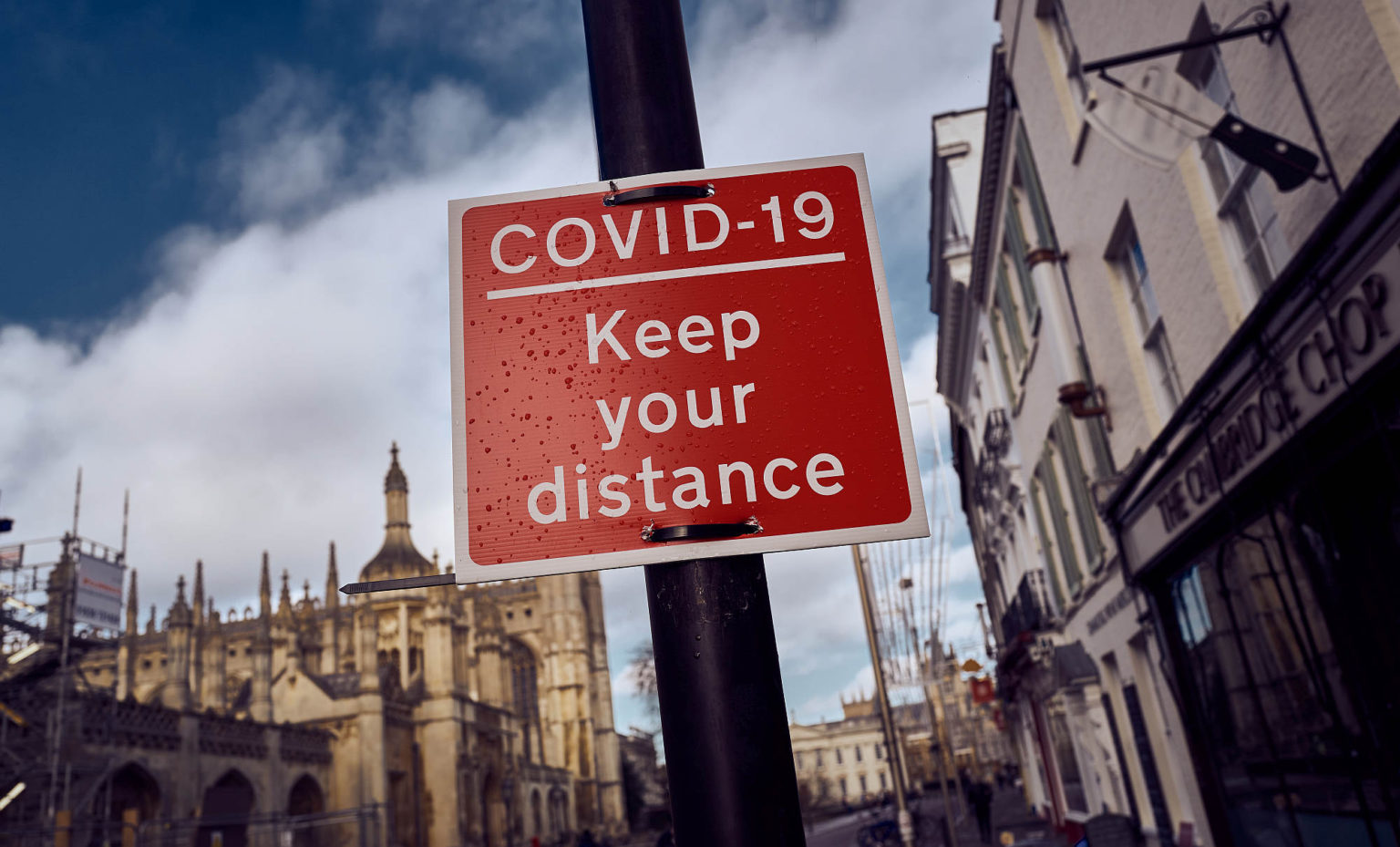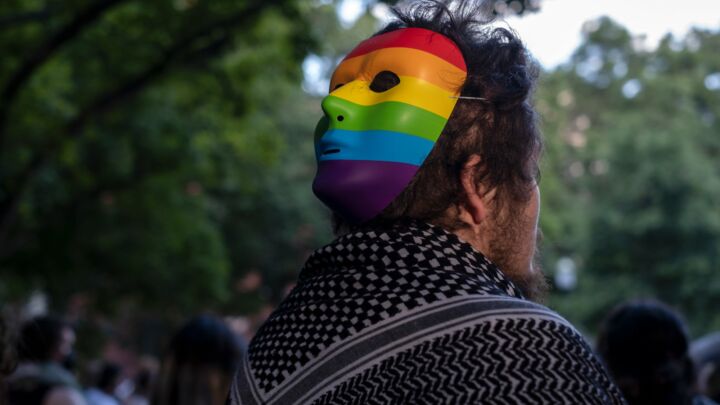
Long-read
The manufacturing of fear
The media have terrorised the public during the pandemic.
Want to read spiked ad-free? Become a spiked supporter.
Be afraid. Be very afraid.
That is how the media approached Covid. Be afraid of everything, from ice cream to semen. Be afraid of being tall. Be afraid of being bald. Be afraid of going to the shops and accepting home deliveries. And if you’re a man, it’s not just semen you should worry about, but also your testicles, your erectile function and your fertility. Even your toes are in danger.
The fearmongering is relentless. Be afraid of your pets. Be afraid for your pets. Just be afraid.
The media have served us a cornucopia of frightening articles and news items about Covid-19 in 2020 and 2021. While writing my new book, A State of Fear: How the UK Government Weaponised Fear During the Covid-19 Pandemic, I encountered a panoply of doom-mongering headlines. These were an indication of the significant role the media have played in creating our state of fear.
Of course, news media should not shy away from reporting frightening news during a pandemic. They should make us aware of the numbers of deaths, the policies being implemented to tackle the pandemic and the latest scientific developments. But during Covid, the media went beyond reporting on the pandemic. Instead, they appeared beholden to the old commercial imperatives, ‘If it scares, it airs’, and ‘If it bleeds, it leads’. It seems fear does sell.
The anxious, frightened climate this has helped to create has been suffocating. Death tolls were constantly brandished without the context of how many people die every day in the UK, and hospital admissions were reported while recoveries were not. As a result, Covid often appeared as a death sentence, an illness you did not recover from – even though it was known from the outset that Covid was a mild illness for the majority of people.
Given the wall-to-wall doom, it is therefore no surprise that the British were one of the most frightened populations in the world. Various studies showed that we were more concerned than other countries about the spread of Covid and less confident in the ability of our government to deal with it. One survey in July 2020 showed that the British public thought between six and seven per cent of the population had died from Covid – which was around 100 times the actual death rate at the time. Indeed, if six or seven per cent of Brits had died from Covid, that would have amounted to about 4,500,000 bodies – we’d have noticed, don’t you think?

While researching A State of Fear, I interviewed members of the general public about how they were impacted by the ‘campaign of fear’ during the epidemic. Many talked of how the media had elevated their alarm.
‘There wasn’t much to do’, Darren told me, ‘so we’d watch TV and we saw programmes about disinfecting your shopping when it arrives, and having a safezone in the kitchen. The nightly bulletins on the TV about death tolls, the big graphs with huge spikes on them, came at us “boom, boom, boom!”. It was a constant barrage of doom and gloom. My fear of the virus went through the roof.’
Sarah told me she had to stop watching the BBC. As her daughter put it, ‘If you just watched or listened to the BBC every day, what hope would you have had?’. Jane, meanwhile, described the ‘gruesome headlines’ that came at her ‘thick and fast’.
The fearmongering about Covid began even before the pandemic hit the UK. We were primed by videos from Wuhan in China, which were then widely circulated by UK-based media outlets. These painted an apocalyptic picture, featuring collapsed citizens, medics in Hazmat suits, concerned bystanders and a city grinding to a halt. In one memorable video, which went viral, so to speak, a woman fell, stiff as a board, flat on her face, on a pavement. The split second where she falters is a giveaway – this was a set-up. If the rest of the world had Covid, China had ‘Stunt Covid’.
These videos were carried by and reported on by major UK newspapers online without their authenticity being verified. Headlines referred to ‘zombies’, a ‘killer bug’ and the ‘apocalypse’. Over and over again, reports and commentaries described these Chinese Covid videos as ‘disturbing’. The coverage was saturated by horror-film and ‘end of days’ references. A Sun headline ‘Zombieland’ travelled with the speed of a virulent sneeze through the copycat global media.
The media have a responsibility to inform us. But they also have a responsibility to be balanced. That didn’t happen when Covid first emerged in China. And it didn’t happen when it hit the UK. Instead, we were treated to contextless coverage of daily death tolls. Add this to the ghoulish headlines and the scary graphs, and the media had left us adrift in a monoculture of fear. Some of the people I interviewed told me about the considerable negative effect this coverage had on their perception of the world, not to mention their mental wellbeing. The media should serve the public. But over the past year, they have been terrorising us.
Newspapers, news shows and so on owe their readers and viewers the best available version of the truth. Something that can be ascertained by careful questioning. So what has gone wrong?
Journalists are human, of course, and subject to the same worries as the rest of us. We are all made of the same psychological stuff. Perhaps their own fears clouded their judgement and reporting. Maybe they did not have time, in the teeth of the crisis, to investigate every image and video supplied by the picture desk with the requisite thoroughness, or to provide the Covid data with the necessary context.
But alongside journalists’ own fears and their lack of time, there are other factors that might explain the widespread media fearmongering. One of which is the financial incentive to be as sensationalist as possible. As one broadsheet comment writer put it to me, when I asked him why newspapers used so many doom-laden headlines: ‘Narcissism and greed drive this.’ He went on: ‘Pay rises are linked to the top-performing articles. The journalists who get the highest views for articles and the most subscriptions generated for the paper get the biggest pay rises. So you want your stories to get the most views.’ Compensating writers for clicks might not lead to the most balanced news reporting.
A pro-lockdown media
The No10 press briefings were often characterised by bland and unchallenging questions from journalists, such as ‘When will the epidemic be over?’. Little wonder that when the Press Gazette ran a poll asking, ‘Do you think journalists have done a good job of holding the government to account during the daily UK Covid-19 press briefings?’, 70 per cent answered ‘No’.
In general, mainstream journalists approached the epidemic as if the lockdown was the only correct response. They didn’t investigate and interrogate the idea of lockdown in general. When journalists did challenge the government, almost performing the role of the unelected opposition, they didn’t challenge the lockdown orthodoxy, or the safetyism that underpins it. They merely urged the government to go further, and lock down sooner and harder. Close businesses? What about closing schools? Tier Three? Why not Tier Four? It was as if journalists had come to see themselves as political activists whose job it was to hold prime minister Boris Johnson to account for not being sufficiently pro-lockdown. Some have even attempted to turn the pandemic into a simplistic morality play, with Covid deaths held up as proof of the evil Tories’ failure to lock down soon enough.

By and large, journalists have shied away from asking more challenging questions of the response to the pandemic. This may be because of the proximity of mass media to political and economic power, as Noam Chomsky has it in Manufacturing Consent. As well as editor and proprietor bias, journalists might feel pressured to maintain good relationships with press officers who, in return, will release privileged information to them, often late in the day. And then there’s the fact that the government and Public Health England became two of the biggest advertisers in the UK. Did the media dare to bite the hand that fed them?
In addition to proprietor bias, the influence of advertising revenue, the lure of the clickbait headline and the journalist’s own tendency to feel the fear and allow that to influence reporting, another worrying factor affected media coverage of the epidemic — state pressure.
On 23 March 2020, Ofcom, the UK’s communication regulator, issued strict guidance about Covid coverage. It asked broadcasters to be alert to ‘health claims related to the virus which may be harmful; medical advice which may be harmful; accuracy or material misleadingness in programmes in relation to the virus or public policy regarding it’. This will have inhibited any media outlets thinking of pursuing any stories that ran counter to government advice.
It was hardly a surprise to find that a Dutch study on our fear of Covid had concluded that our exposure to media increased our fear. ‘Stronger messages in the media may induce more fear and therefore more compliance with the social distancing and lockdown policies imposed’, it stated. ‘However, we caution against using media messages to induce more fear in the general public… as this may only increase distress. Furthermore, a substantial proportion of respondents in our sample were concerned about the role of (social) media, mass panic and hysteria. Hence, fear-appeals in the media should be used carefully.’
This is not advice the UK government and its advisers have heeded. The media have actively induced fear, and therefore prompted more compliance with lockdown measures. But not only did the Fourth Estate help to shape citizens’ behaviour during lockdown, it is also now impeding our exit from lockdown.
Dangerous times ahead
Even though the vaccine rollout is proving a success, the media are still fearmongering about Covid. The language in headlines and articles continues to play up the risks and threats on the horizon. As Bloomberg had it recently, ‘We must start planning for a permanent pandemic – with coronavirus mutations pitted against vaccinations in a global arms race, we may never go back to normal’.
And those who do not conform to the safety-first orthodoxy continue to be demonised. It feels as if dangerous times are ahead.
In Israel, for instance, Haaretz described ultra-Orthodox Jews who do not follow the state’s rules as ‘Covid insurgents’ and ‘terrorists’. In a particularly hyperbolic description, ‘maskless individuals’ were accused of setting off ‘epidemiological time bombs’. Once we feared bombs that might be dropped on us following the pressing of a red button in a faraway country. Then we feared bombs strapped to terrorists. Now human beings are bombs.
Back in the UK, media coverage of Covid has taken a similarly bio-political turn. People are being conjured up as threats, indeed biohazards. A recent Times headline – ‘Hunt for mystery person who tested positive for Brazilian Covid-19 variant, then vanished’ – evoked an image of a hunt for a person carrying a new Covid variant as if it was a weapon. As Nick Cohen wrote in the Guardian, ‘It is only a matter of time before we turn on the unvaccinated’. History reverberates with examples of deliberate attempts to dehumanise and divide people and it has never ended well. It is a worrying development. Let us observe how we report on events in our time and consciously choose to write a better story.
There is much talk right now of the forthcoming inquiry into the handling of Covid. While there should be a great deal of focus on the government and the state, it might be wise to consider the role of the media, too. Something seems to have gone seriously awry. Bad news has had too many wings. The media have not been dispassionately reporting on the pandemic – they have been making fear fly. Perhaps in the future, the media need new imperatives: if it leads, let it be vigorously fact-checked; and if it airs, let the sources be verified. And please, don’t try to make us afraid.
Laura Dodsworth is a writer, photographer and filmmaker. Visit her website here. Her latest book, A State of Fear: how the UK government weaponised fear during the Covid-19 pandemic’ is published by Pinter & Martin, (Buy this book from Amazon(UK).)
Pictures by: Getty Images
Celebrate 25 years of spiked!
A media ecosystem dominated by a handful of billionaire owners, bad actors spreading disinformation online and the rich and powerful trying to stop us publishing stories. But we have you on our side. help to fund our journalism and those who choose All-access digital enjoy exclusive extras:
- Unlimited articles in our app and ad-free reading on all devices
- Exclusive newsletter and far fewer asks for support
- Full access to the Guardian Feast app
If you can, please support us on a monthly basis and make a big impact in support of open, independent journalism. Thank you.






Comments
Want to join the conversation?
Only spiked supporters and patrons, who donate regularly to us, can comment on our articles.